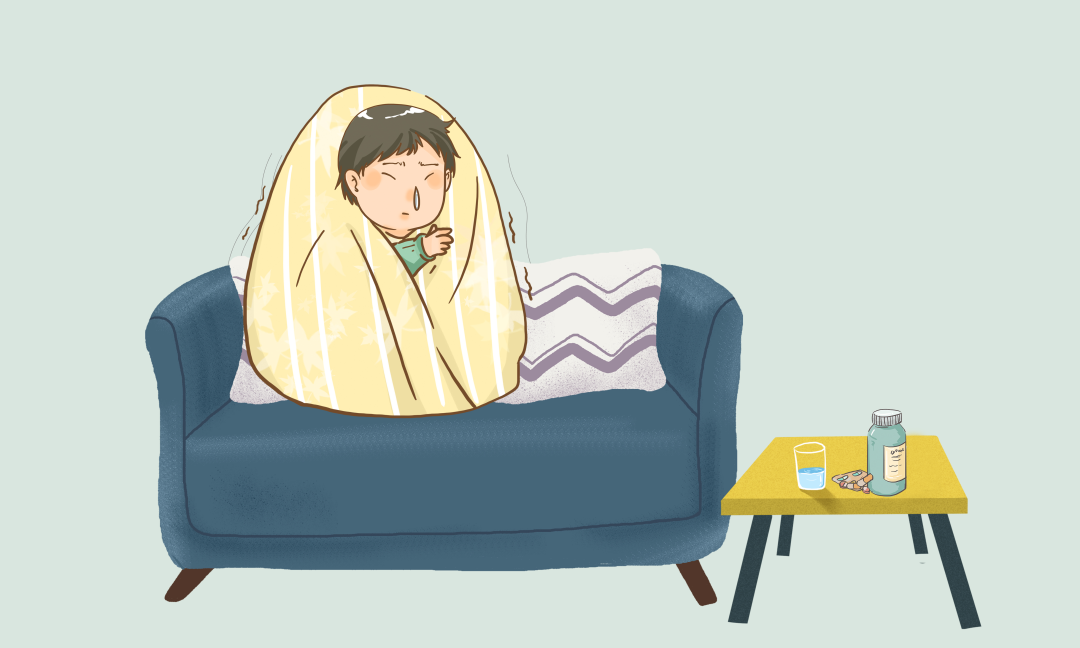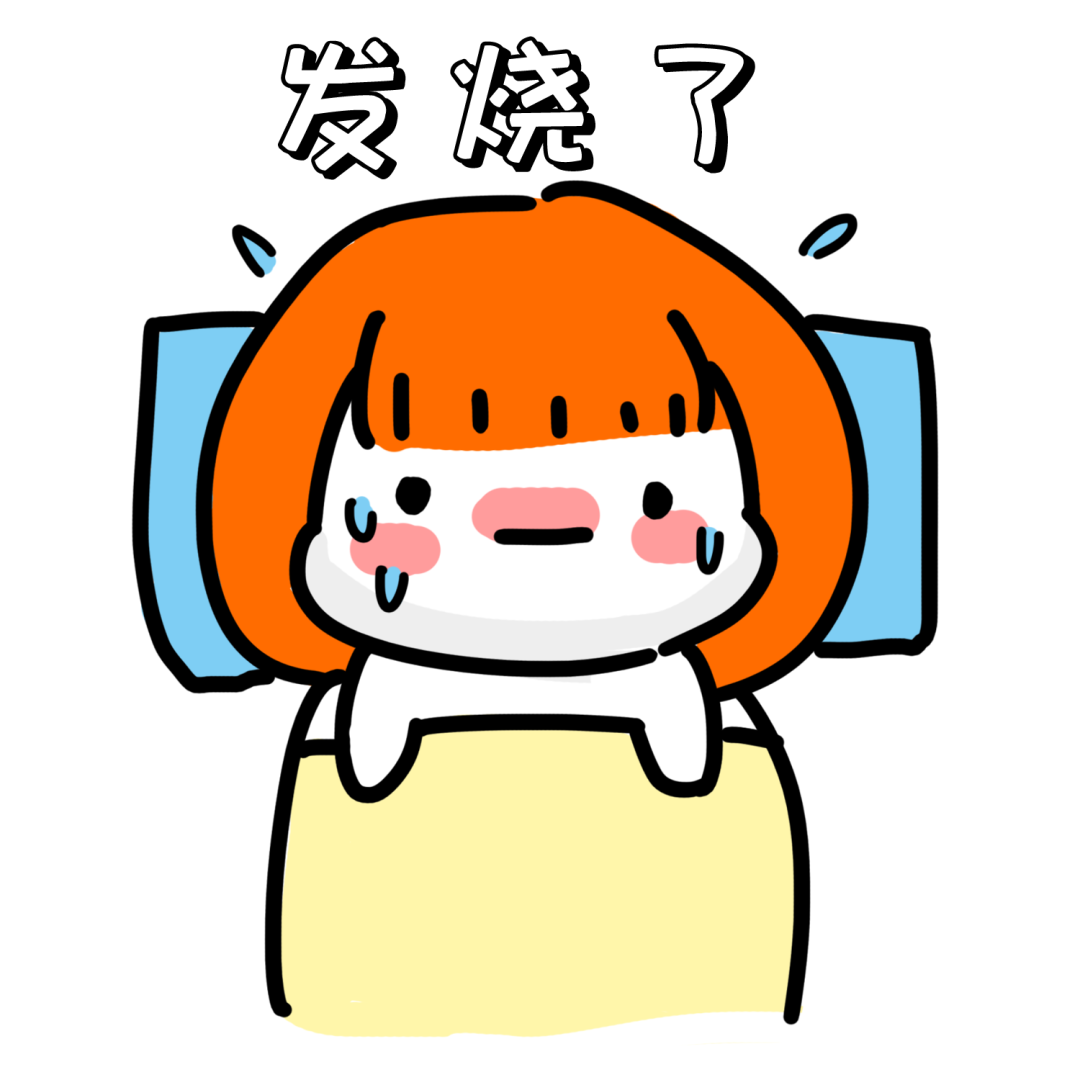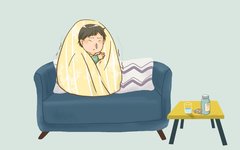
—Click the blue text to follow us—
Common Pediatric Diseases – Acute Exogenous Febrile Illness in Children

Acute exogenous febrile illness in children is caused by the invasion of external pathogens and is quite common. Due to the delicate constitution of children, when they first encounter external pathogens, there is a struggle between the righteous and the evil, leading to significant fever. Moreover, the symptoms vary depending on the type of external pathogen encountered, and the treatment differs accordingly.


1
Characteristics of Acute Exogenous Febrile Illness in Children
According to Wu Jutong’s “Differentiation of Warm Diseases” from the Qing Dynasty: “Children have not yet fully developed their Yang and Yin.” The characteristics of children’s constitution can be summarized as “immature Yin and Yang”; “Yang” refers to the intangible functions and heat, while “immature Yang” indicates that children are still in the developmental stage, full of vitality and energy, but their functions are not yet fully developed. “Yin” refers to the tangible aspects such as blood, fluids, and organs, while “immature Yin” indicates that development is not yet complete, fluids are easily damaged, and organs are not strong, leading to a fragile constitution.
Due to the physiological characteristics of children, which exhibit traits of “pure Yang” and “immature Yin and Yang,” their organs are delicate, their bodies are formed but not fully developed, making them susceptible to external pathogens. The struggle between the righteous and the evil often leads to the transformation of the six Qi into Yang, frequently resulting in fever. Additionally, the “pure Yang” body of children manifests as a state of abundant Yang Qi, making them prone to high fevers after encountering Yang pathogens. If the external pathogen penetrates the immature body, it can easily lead to heat entering the pericardium or extreme heat generating wind, causing phlegm and turbidity to obstruct the clear orifices, resulting in delirium, confusion, and convulsions, which are critical conditions.
Pathologically, due to the incomplete structure and function of children’s bodies, their ability to resist external pathogens is relatively insufficient. After encountering external pathogens, they are prone to complications such as convulsions, phlegm, and stagnation.



2
Symptoms of Acute Exogenous Febrile Illness in Children
The main symptom of acute exogenous febrile illness in children is fever, often accompanied by various complications, and it is also an early manifestation of many diseases. Therefore, since ancient times, a wealth of experience has been accumulated in the understanding and treatment of this illness. Ye Tianshi proposed in “On Warm Diseases”: “When the warm pathogen first attacks, it primarily affects the lungs, then reversely transmits to the pericardium. The lungs govern Qi and belong to the Wei (defensive) aspect, while the heart governs blood and belongs to the Ying (nutritive) aspect. Although the differentiation of Ying and Wei Qi is similar to that of typhoid fever, the treatment methods are significantly different.” This is indeed a unique insight into the theory of acute exogenous febrile illness, which still holds significant clinical importance in the diagnosis and treatment of exogenous febrile illnesses today.



3
Diagnosis and Treatment of Acute Exogenous Febrile Illness in Children
Mr. Shi Jinmo, one of the four great doctors of modern Beijing, also has unique clinical insights into the diagnosis and treatment of exogenous febrile illnesses. He pointed out that for acute exogenous febrile illness, it is crucial to differentiate between Qi and blood, deficiency and excess, and the exterior and interior.
Differentiating Qi and blood means clarifying the levels. If the pathogen is in the Wei Qi, treatment is relatively easy; if it enters the Ying blood, the condition is severe. The warm pathogen stays in the Wei aspect for a short time and can easily harm the Qi aspect, but as long as the pathogenic factor remains in the Qi aspect, one should defend this line of defense and prevent the pathogen from penetrating further. When the pathogen lingers in the Qi aspect, it is essential to avoid using blood-clearing herbs to prevent drawing the pathogen into the Ying blood.
Discussing deficiency and excess means considering the relationship between the righteous and the evil. If deficiency and excess are not distinguished, and the righteous and evil are unclear, misdiagnosis often occurs. For example, if the righteous Qi is weak and the child encounters the six evils or epidemic pathogens, one should support the righteous and expel the evil. If only dispersing or exterior-releasing agents are used, it often leads to a weakened exterior and further deficiency, resulting in other complications.
Examining the exterior and interior means carefully checking the balance between the two. Exogenous febrile diseases often involve internal heat accumulation and external invasion of wind and cold. Therefore, treatment should simultaneously release the exterior from cold and clear the internal heat. The balance between exterior and interior must be appropriate, and various treatment methods based on the weight of the exterior and interior have been created, which are more practical in clinical settings. Although these experiences are discussed in the context of adults, they are equally applicable to children.



4
Treatment Principles for Acute Exogenous Febrile Illness in Children
The treatment principle for acute febrile illness in children is primarily to expel the evil, but it should be done with the principle of “stop when the disease is moderate,” taking into account the deficiency and excess of the organs. When treating the invading external evil, it is crucial to pay attention to its exit route to prevent leaving the door open for the enemy. There are three exit routes: sweating and the two excretions. When the exterior is predominant, sweating is used to resolve it; when the interior is predominant, the two excretions are used to clear it. Therefore, distinguishing between the exterior and interior is of utmost importance, as excessive sweating can harm fluids, and excessive purging can weaken the righteous Qi. This is the correct method for treating acute exogenous febrile illness in children. However, in clinical practice, it is often observed that acute exogenous febrile illness in children is frequently accompanied by symptoms of phlegm, stagnation, and convulsions, so multiple methods need to be combined in treatment.
-
Simultaneous Treatment of Exterior and Interior, Concurrent Use of Dispersing and Digestive Agents
Children’s organs are delicate, their Qi is not fully developed, and their pores are thin, making their Wei (defensive) aspect unstable and easily invaded by the six evils and epidemic pathogens. Among the external pathogens, warm pathogens are the most common. After children encounter them, due to their immature Yang constitution, they are not only prone to heat transformation but also more likely to lead to convulsions and other critical conditions. Additionally, children’s spleen is often insufficient, and after encountering pathogens, their spleen and stomach’s transport function is inadequate, often leading to food stagnation and heat accumulation, exacerbating the fever. In this case, the symptoms of external invasion and internal stagnation are present. Simply using pungent and cool exterior-releasing and heat-clearing detoxifying agents often yields little effect. Therefore, while releasing the exterior, it is also necessary to add digestive agents. Common exterior-releasing herbs include Chai Hu (Bupleurum), Lian Qiao (Forsythia), Jin Yin Hua (Honeysuckle), Bo He (Mint), and Dou Chi (Fermented Soybeans), while digestive agents include Zhi Qiao (Bitter Orange), Shan Zha (Hawthorn), Ji Nei Jin (Chicken Gizzard Membrane), Jian Qu (Fermented Wheat), Lai Fu Zi (Radish Seed), and E Zhu (Curcuma).
-
Addressing Upper Illness from Below, Removing the Fuel from the Fire
In acute febrile illness in children, sore throat and swelling are common, and in severe cases, there may be tonsillar enlargement, with severe heat and toxins leading to symptoms such as ulcerative throat, oral herpes, and ulcers. This is caused by the warm pathogen attacking from above, combined with internal heat accumulation. Some children may also present with abdominal pain, bloating, constipation, and a thick yellow tongue coating, indicating a Yangming bowel excess syndrome, or exhibit symptoms of reduced urination, red tongue tip, and dry mouth, indicating severe heart fire and damage to Yin fluids. Treatment should be based on the condition, using heat-clearing and detoxifying agents while also promoting bowel movements and clearing excess heat or nourishing Yin and generating fluids, allowing the heat and toxins to be resolved from below. Common bowel-moving and heat-clearing herbs include Da Huang (Rhubarb), Mang Xiao (Mirabilite), Zhi Shi (Bitter Orange), Hou Po (Magnolia Bark), Huo Ma Ren (Hemp Seed), and Fan Xie Ye (Senna Leaf), while herbs that nourish Yin and generate fluids include Lu Gen (Reed Rhizome), Zhu Ye (Bamboo Leaf), Bai Mao Gen (Imperata), Chi Shao (Red Peony), and Tong Cao (Rice Paper Plant).
-
Post-Acute Phase, Consider Nourishing Yin
Exogenous epidemic pathogens are also quite common in children, with common diseases including measles, mumps, summer heat, and spring warmth. After the acute phase, there is often significant damage to Yin fluids, leading to symptoms such as dry mouth, dry lips, thirst, reduced urination, and a red tongue with little fluid. While clearing residual pathogens, it is essential to protect Yin fluids. Common herbs used for this purpose include Sha Shen (Adenophora), Mai Dong (Ophiopogon), Yu Zhu (Polygonatum), Shi Hu (Dendrobium), Xiang Bei Mu (Fritillaria), and Sheng Di (Rehmannia), allowing the evil to depart and the Yin to recover, achieving the goal of curing acute febrile illness.
-END-
仁心精诚交流平台
Long press to follow the “Renxin Jingcheng” public account
Reply “literature” in the background to obtain free access
to the electronic version of “Tongxi Tong General Practice Textbook” and clinical literature

